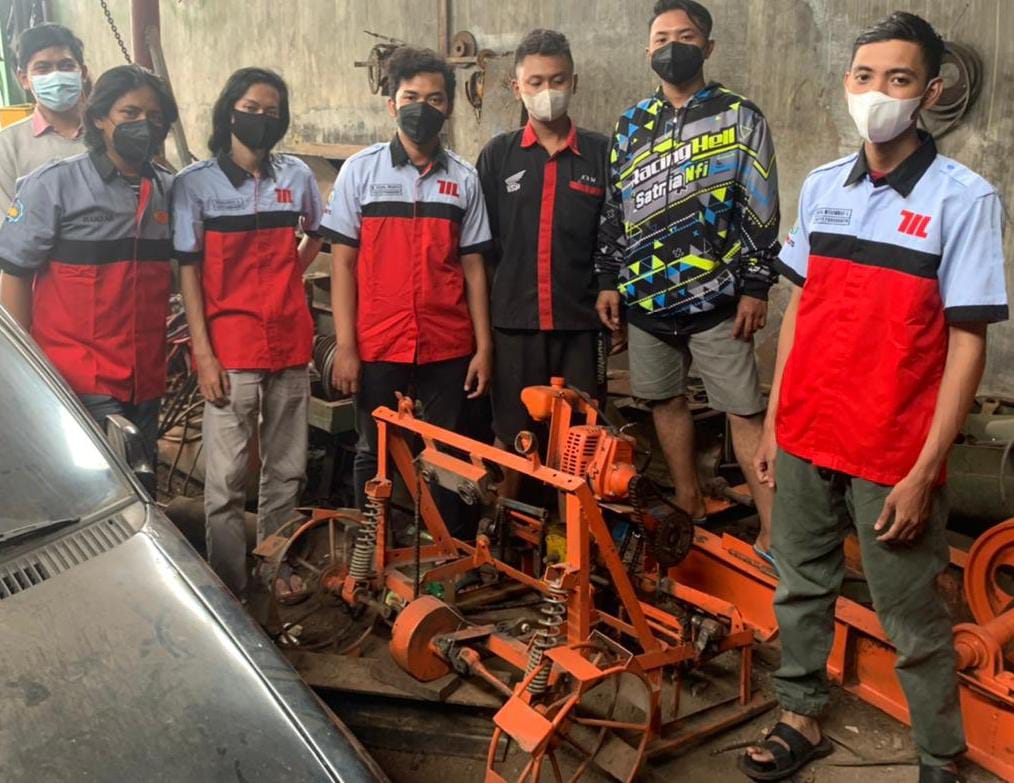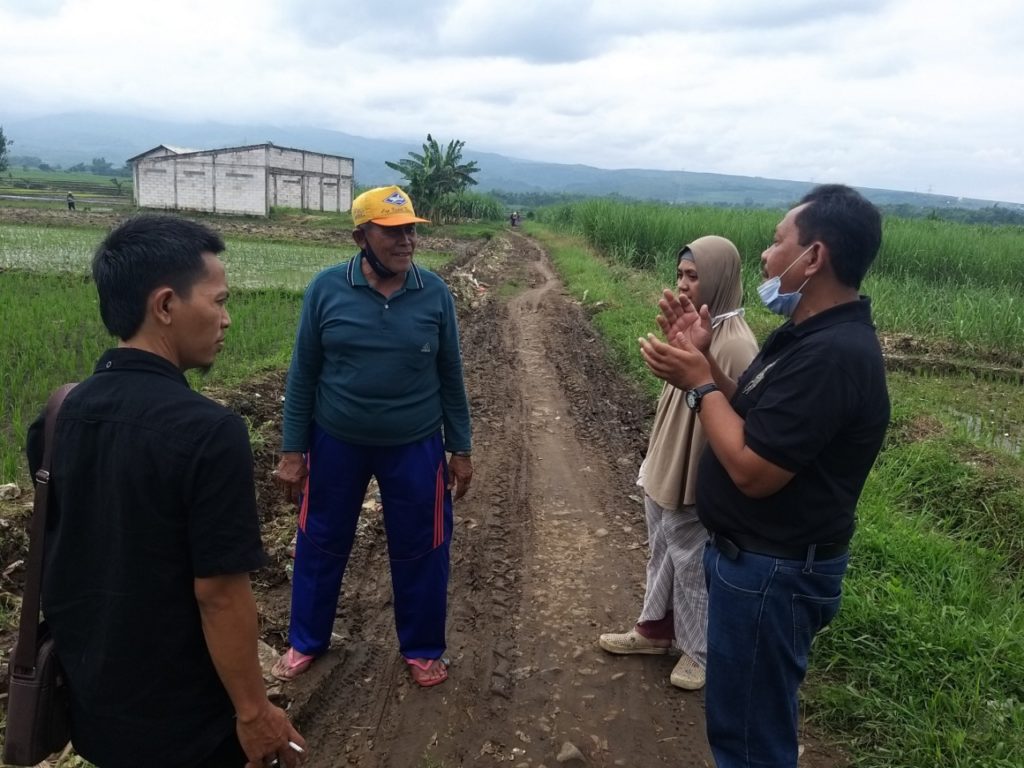ITS Abmas Successfully Develops Automatic Rice Planting Machine

Automatic rice planting machine being developed by the ITS Abmas Team
ITS Campus, ITS News — Rice derived from rice is the staple food of the Indonesian people, so its production must continue to be increased to achieve food security. Departing from this, the Community Service (Abmas) team of the Institut Teknologi Sepuluh November (ITS) succeeded in combining the jajar legowo rice planting system with the development of an automatic rice planter (transplanter).
One member of the ITS Abmas team, Liza Rusdiyana ST MT, explained that rice cultivation in Indonesia still relies on human labor, which has many shortcomings—from high labor wages to less than optimal planting results. Therefore, it is necessary to have automation in the rice planting process.
Transplanters can plant rice with a 2:1 row legowo system. This planting system increases rice yields by providing a marginal crop effect. “If you plant rice, there will be a lot of rice on edge. Because the air circulation and the intensity of the sun’s light are good,” said the lecturer at the Department of Industrial Mechanical Engineering.
Based on the trial using the 2:1 row legowo system that has been implemented by the Jatirejo, Mojokerto branch of the Nahdlatul Ulama Farmers Community (NU), Liza said that there was an increase in rice yields of 40 percent. In planting a quarter hectare of rice, the rice harvested can increase by three to four quintals.
Liza said that this was also due to the reduction in rat pests and the application of fertilizer, weed removal, and easy maintenance. “By using jajar legowo 2:1, the plants are more organized, so that rats are rare and maintenance is straightforward,” he said.
According to Liza, the transplanters on the market have large dimensions, so they are challenging to use in rice fields located on slopes. The planting system is still using the 4:1 row legowo. While the transplanter, which has been carried since 2020, has a smaller dimension, so it can be used in tortuous fields. In addition, the small sizes also make this machine not easy to sink in muddy rice fields.

The ITS Abmas team discussed with NU farmer Sutorejo (second from left) about the Abmas. program
Currently, this transplanter is in the development stage to be operated automatically using a remote control to reduce the number of workers. With the support of a microcontroller, the transplanter, which is fully developed by ITS, is planned to grow rice by itself.
By utilizing the 2:1 row legowo system and this automatic transplanter, the farmers’ work efficiency and effectiveness will increase. “This way, it motivates other farmers to think progressively and can take advantage of various existing technologies,” added Liza.
However, Liza admits that there are still many obstacles in developing this transplanter. Based on the trials that have been carried out, the main problem is how to make the microcontroller run automatically.
Sensor sensitivity that is still lacking causes the engine not to run perfectly straight. “The sensor factor that is submerged in the ground is also the cause; as a result, the transplanter likes to turn on his own,” he admitted.
Abmas, which started last June, will still be continued for the next few months. Since it is already the rainy season, Liza hopes that the trial can be carried out optimally. “Because the microcontroller must be tested a lot to be able to work properly when operated,” he concluded. (ITS Public Relation)
Reporter: Muhammad Miftah Fakhrizal
Redaktur: Sofyan Abidin
Related News
-
ITS Wins 2024 Project Implementation Award for Commitment to Gender Implementation
ITS Campus, ITS News —Not only technology-oriented, Institut Teknologi Sepuluh Nopember (ITS) also show its commitment to support gender
December 08, 2021 06:12 -
ITS Professor Researched the Role of Human Integration in Sustainable Architecture
ITS Campus, ITS News –The developing era has an impact on many aspects of life, including in the field
December 08, 2021 06:12 -
ITS Sends Off Group for Joint Homecoming to 64 Destination Areas
ITS Campus, ITS News — Approaching Eid al-Fitr, the Sepuluh Nopember Institute of Technology (ITS) is once again facilitating academics who want
December 08, 2021 06:12 -
ITS Expert: IHSG Decline Has Significant Impact on Indonesian Economy
ITS Campus, ITS News — The decline in the Composite Stock Price Index (IHSG) by five percent on March 18,
December 08, 2021 06:12
